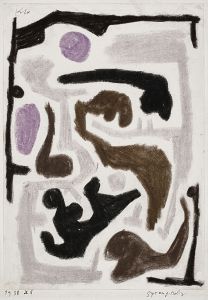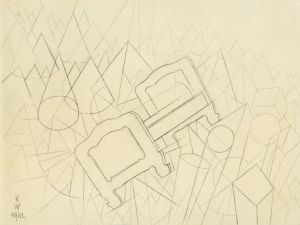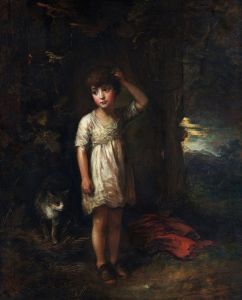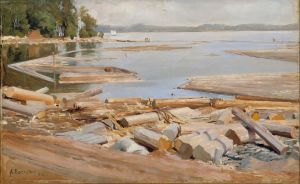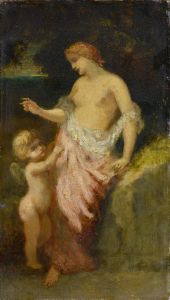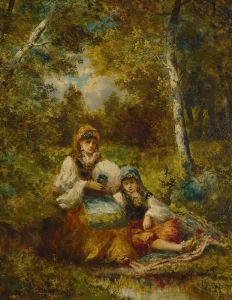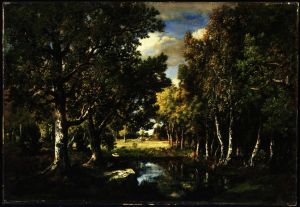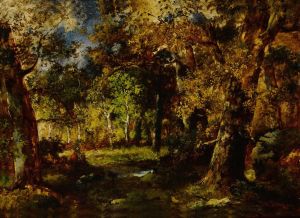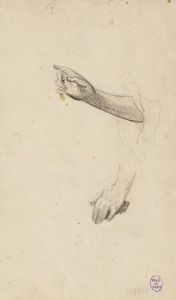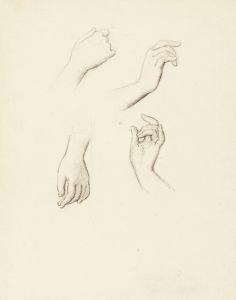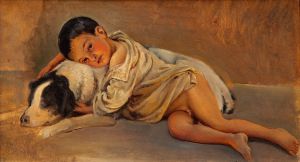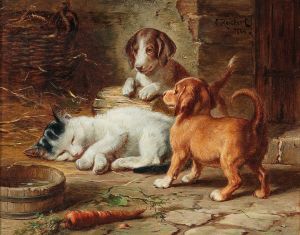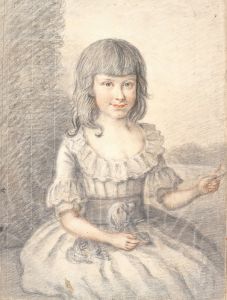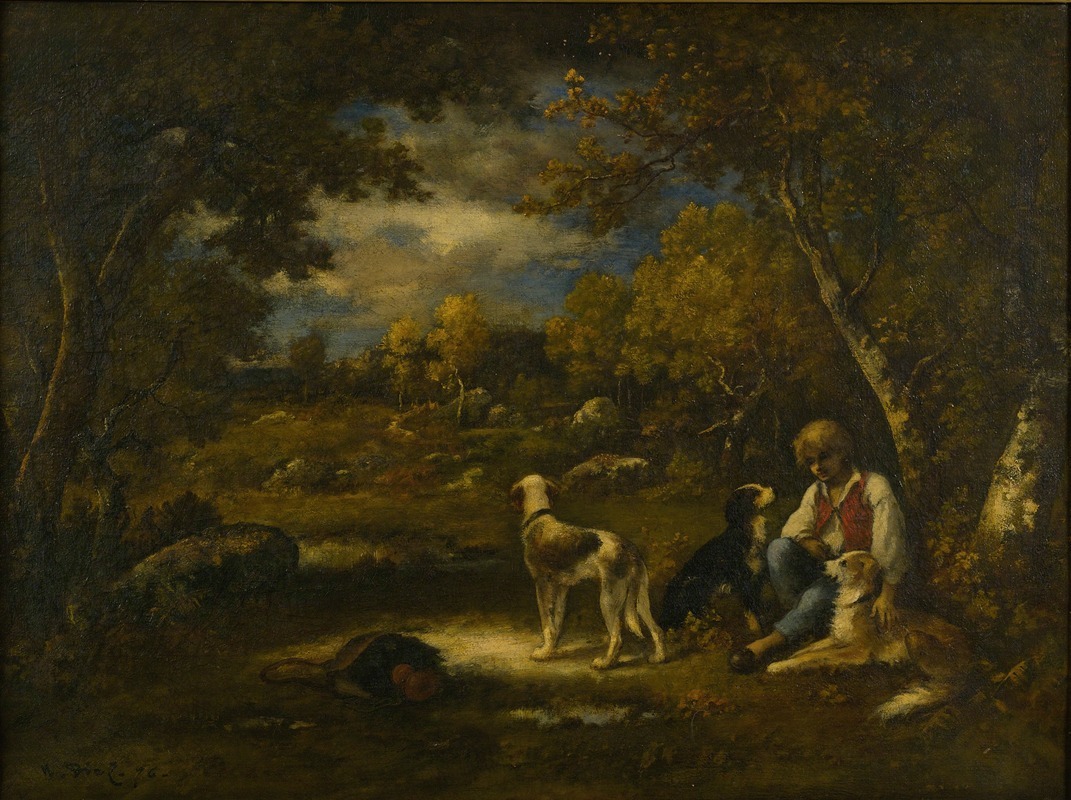
Boy With His Dogs In A Wood
A hand-painted replica of Narcisse-Virgile Diaz de La Peña’s masterpiece Boy With His Dogs In A Wood, meticulously crafted by professional artists to capture the true essence of the original. Each piece is created with museum-quality canvas and rare mineral pigments, carefully painted by experienced artists with delicate brushstrokes and rich, layered colors to perfectly recreate the texture of the original artwork. Unlike machine-printed reproductions, this hand-painted version brings the painting to life, infused with the artist’s emotions and skill in every stroke. Whether for personal collection or home decoration, it instantly elevates the artistic atmosphere of any space.
Narcisse-Virgile Diaz de la Peña was a prominent 19th-century French painter associated with the Barbizon School, a movement that emphasized naturalism and the depiction of landscapes. His work, "Boy With His Dogs In A Wood," exemplifies his skill in capturing the serene and intimate relationship between humans and nature, a common theme in his oeuvre.
Diaz de la Peña was born in Bordeaux, France, in 1807 to Spanish parents. He faced significant challenges early in life, including the loss of his father and a leg amputation due to an infection. Despite these hardships, he pursued a career in art, initially working in a porcelain factory where he honed his skills in painting. He later transitioned to canvas, where he found his true calling.
The Barbizon School, named after the village of Barbizon near the Forest of Fontainebleau, was a group of artists who sought to break away from the formalism of academic art. They focused on painting en plein air, or outdoors, to capture the natural light and atmosphere of the landscape. Diaz de la Peña became an integral part of this movement, and his works often featured lush, wooded scenes with a romantic and sometimes mystical quality.
"Boy With His Dogs In A Wood" is a testament to Diaz de la Peña's ability to blend figures harmoniously into their natural surroundings. The painting depicts a young boy accompanied by his dogs, set against a backdrop of dense woodland. The composition is characterized by its rich, earthy palette and the soft, diffused light filtering through the trees, creating a tranquil and intimate scene.
Diaz de la Peña's technique involved loose brushwork and a keen attention to the effects of light and shadow, which added depth and dimension to his landscapes. His ability to convey the textures of foliage and the play of light on different surfaces is evident in this painting. The boy and his dogs are rendered with a gentle realism, their presence adding a narrative element to the otherwise serene landscape.
Throughout his career, Diaz de la Peña exhibited regularly at the Paris Salon, where his works were well-received. He was known for his generosity and support of fellow artists, including Jean-François Millet and Théodore Rousseau, both key figures in the Barbizon School. His influence extended beyond his lifetime, as his approach to landscape painting helped pave the way for the Impressionists, who further explored the effects of light and color.
"Boy With His Dogs In A Wood" reflects Diaz de la Peña's deep appreciation for nature and his ability to capture its beauty and tranquility. The painting remains a fine example of the Barbizon School's ideals and Diaz de la Peña's contribution to 19th-century art. His works continue to be celebrated for their emotive power and technical mastery, securing his place in the history of French landscape painting.





